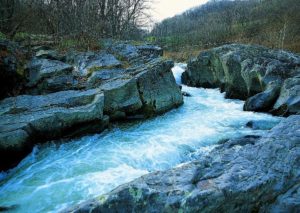The “Karakoram anomaly”, which describes the stability of glaciers in the central Karakoram region in contrast to the retreat of glaciers in nearby Himalayas and other parts of the world, has been in existence “at least since the 1970s”, says an expert, citing US spy imagery from the Cold War years.
With his findings, Tobias Bolch, a glaciologist of University of Zurich, has added a new dimension to an issue that has long intrigued glaciologists. Scientists had noted the abnormal behaviour of glaciers in the central Himalayas in 2000 and are yet to establish conclusively why this is so. Resolving the conundrum could hold the key to the critical issue of water availability and glacial melt in India and Pakistan. The Karakoram glaciers make up almost half of the water flow of the Indus River in a region where agriculture is the mainstay of the people.
“Thanks to US spy imagery during the Cold War, I can now confirm that the Karakoram Anomaly has existed at least since the 1970s as we have no high resolution imagery before that period,” Bolch told scientists at a recent conference on Climate and Environment Change Impacts on the Indus Basin Waters organised by the International Centre for Integrated Mountain Development (ICIMOD) in Kathmandu.
This is the first time that a scientist has compared present-day images with “a complete coverage of the past which gives us a historical perspective about the behaviour of these glaciers,” said Matthias Winiger of the University of Bonn, who was present at the conference.
Officially known as reconnaissance imagery, the high resolution images – which were declassified in the 1990s – had not been used by any scientist to study Himalayan glaciers until now.
Bolch said he used images from the KH-9 Hexagon satellite, which was referred to as ‘Big Bird’ and used by US military intelligence during the Cold War given its capability of sending high resolution imagery. It had a coverage area of 120-240 kilometres with a resolution of eight metres.
In his book, Spies in the Sky, Pat Norris – who worked at the European Space Agency as a software engineer for the Hubble Telescope – writes that KH-9 Hexagon was the size of a Greyhound bus, and weighed a staggering 13 tonnes.
The Karakoram anomaly
In 2005, Kenneth Hewitt, a glaciologist at the Wilfred Laurier University in Canada was the first to use the term “Karakoram anomaly” to describe the stable (or advancing) glaciers in central Karakoram in contrast to declining glaciers around the world. Since then scientists have been trying to understand the “abnormal behaviour” of glaciers in the central Karakoram region.
In an interview in 2010 with Scientific American, Hewitt said the advances are a response to climate change and appear to relate to negative feedback in the glacier environment involving increased snowfall or reduced melting or both.
The evidence, he said, is largely indirect or model-driven. But research using satellite imagery suggests that both increased snowfall at higher elevations and more cloud cover in the summer may reduce melting. “If the apparent anomalies result from a warming globe, it suggests more moisture is transported from warmer oceans to the highest mountains. Once there, it either nourishes the glaciers with increased precipitation or protects them from some melting with more frequent cloudiness,” Hewitt explained.
In October 2014, scientists at Princeton University claimed they had solved the Karakoram puzzle. Their findings published in Nature Geoscience claimed it was the unique seasonal pattern that keeps the mountain range relatively cold and dry during the summer.
Read also: Winter snow stops Karakoram glaciers melting
According to their findings, while other Himalayan ranges and the Tibetan Plateau get most of their precipitation from Southeast Asia’s summer monsoons, the Karakoram’s comes from Central Asia’s cold winter winds. However, the anomaly still persists as scientists are not sure what it means for the future of these glaciers.
“Our work is an important piece to understanding the Karakoram anomaly. But that balance of what’s coming off the glacier versus what’s coming in also matters for understanding how the glacier will change in the future,” lead author Sarah Kapnick has said.
The Himalayas contain the largest store of ice outside the earth’s polar regions and scientists have been trying to understand the behaviour of glaciers here. But appropriate climate models for glaciers and their future projects still remain a challenge.
![<p>The Karakorum glaciers [image courtesy earthobservatory.nasa.gov]</p>](https://dialogue.earth/content/uploads/2016/03/Karakorum-glaciers.jpg)








![A one-horned rhino in the grasslands of Orang (left) and a tiger in its wetlands [Images by Forest Department, Government of Assam]](https://dialogue.earth/content/uploads/2016/03/Orang_Wildlife_Image_Forest_Department_Assam-300x98.jpg)